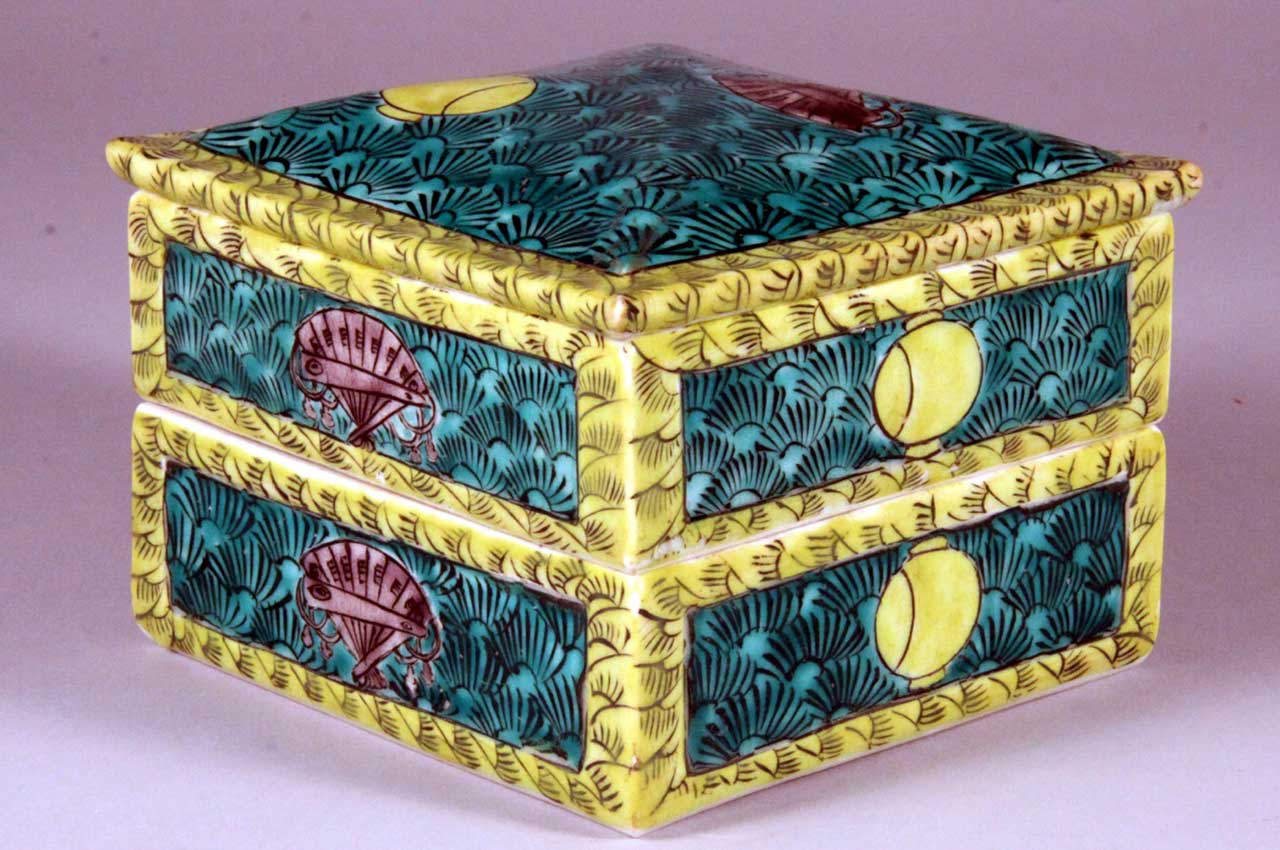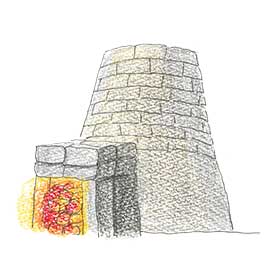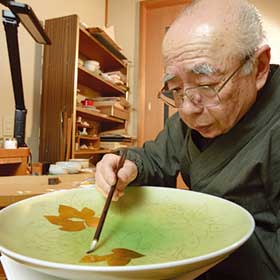Kutani ware
 Tiered box with design of fan in overglaze enamels, Wakasugi kiln (Komatsu City Museum Archives)Kutani ware is porcelain made from porcelain stone. Currently, only few production areas of porcelain stone remain in Japan, including one in Hanasaka town, Komatsu. Hanasaka porcelain stone was discovered by HONDA Teikichi, a potter invited from Hizen (Nagasaki prefecture) about 200 years ago. A full-scale porcelain production started with the stone at Wakasugi kiln. This has led to the current Kutani ware.
Tiered box with design of fan in overglaze enamels, Wakasugi kiln (Komatsu City Museum Archives)Kutani ware is porcelain made from porcelain stone. Currently, only few production areas of porcelain stone remain in Japan, including one in Hanasaka town, Komatsu. Hanasaka porcelain stone was discovered by HONDA Teikichi, a potter invited from Hizen (Nagasaki prefecture) about 200 years ago. A full-scale porcelain production started with the stone at Wakasugi kiln. This has led to the current Kutani ware.
-
Hanasaka porcelain stone
 Hanasaka porcelain stoneCurrently in Komatsu city, only two factories produce porcelain clay from porcelain stone mined in Hanasaka. Clay made of Hanasaka porcelain stone has elasticity, and it is suitable for shaping using molds. The clay body becomes gray after firing.
Hanasaka porcelain stoneCurrently in Komatsu city, only two factories produce porcelain clay from porcelain stone mined in Hanasaka. Clay made of Hanasaka porcelain stone has elasticity, and it is suitable for shaping using molds. The clay body becomes gray after firing. -
Enameling kiln
 Enameling kiln is used to create the brilliant coloring of Kutani ware. Firewood had been used for it until around 1965, but it has been changing to gas or electricity over time.
Enameling kiln is used to create the brilliant coloring of Kutani ware. Firewood had been used for it until around 1965, but it has been changing to gas or electricity over time. -
Living National Treasure
 YOSHITA Minori, demonstrating underglaze gold techniqueWe have prominent Kutani artists in Komatsu city. ASAKURA Isokichi II became a member of the Japan Art Academy, and TOKUDA Yasokichi III and YOSHITA Minori were designated Living National Treasures. Their unique techniques were highly acknowledged.
YOSHITA Minori, demonstrating underglaze gold techniqueWe have prominent Kutani artists in Komatsu city. ASAKURA Isokichi II became a member of the Japan Art Academy, and TOKUDA Yasokichi III and YOSHITA Minori were designated Living National Treasures. Their unique techniques were highly acknowledged.


